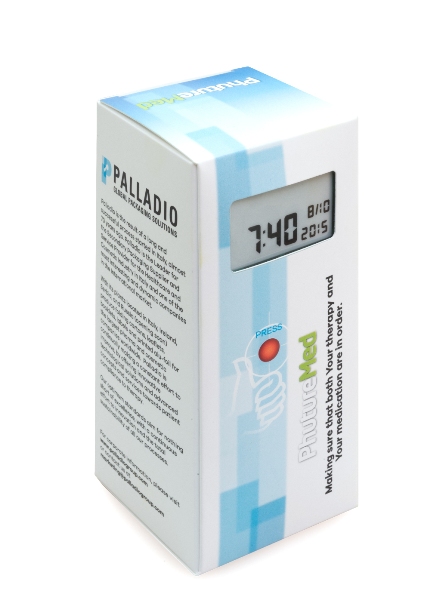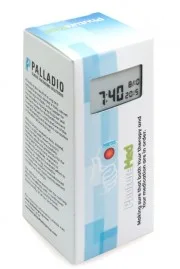EInk and Palladio, a secondary packaging supplier to the pharmaceutical and cosmetic industry announced a new design of pharmaceutical packaging using an electrophoretic display panel. The display from EInk is basically a small version of its electrophoretic module.
The goal of the new packaging is to include sensors with a bistable display that will show any events that violate any preprogrammed parameters while the drug package was out of a controlled facility. This could include any opening of the package, dropping it or reaching a temperature outside a set range. In any of these or other events, the integrity of the packaged drug may be compromised and it may not be useful for use on a patient any more.
 Source: EInk
Source: EInk
The package obviously includes sensors, a small processing unit and the display panel with controller. There is also a battery that may run out after some time, possibly compromising the collected data. Any type of constantly on displays such as LCD or OLED will run down the battery faster. E Ink uses the bistability of the electrophoretic display to write any information once and this will remain on the screen even after the battery has run out.
Analyst Comment
With consumer’s being more attracted to tablets than e-readers these days, EInk is desperately looking for new applications to increase its sales. We have seen the use of EInk displays in Smartphones as a second screen as well as in smartwatches. In both cases, the lower energy draw of the display panel makes it possible for the device maker to offer additional functionality without compromising battery life too much. These kinds of applications are ideal for bistable displays like electrophoretic displays as they keep showing the respective content without the further need for battery power.
The new application falls somewhat into this category as well, but focuses on providing critical information to the user without the need for power. Similar applications have been shown in the use of electrophoretic displays for emergency signage and information displays. The low power consumption to write once with no power needed to retain the displayed information afterwards is ideal for such an application.
Earlier this year, EInk has also shown Prism, an electrophoretic display solution aiming at architectural applications. Here the electrophoretic display panel allows the change of logos and color to create different appearance of spaces.
All these applications make perfect use of the bistability. Amazingly, many applications besides electronic book readers do not use the perfect outdoor readability of electrophoretic displays. Instead the advances in the light management properties of display panels and brighter backlights are providing outdoor readability sufficient for the user. This does not make the task for EInk any easier. Indeed, lower power draw seems to be the main benefit that electrophoretic displays have to offer these days. (NH)

